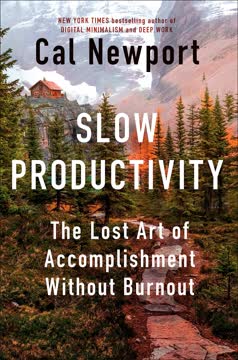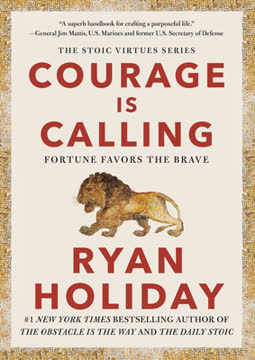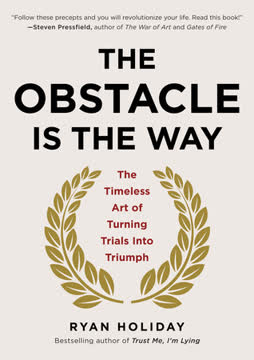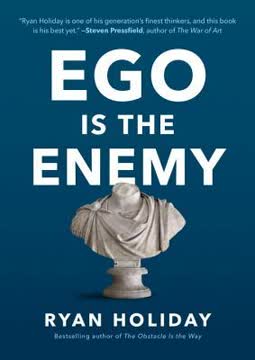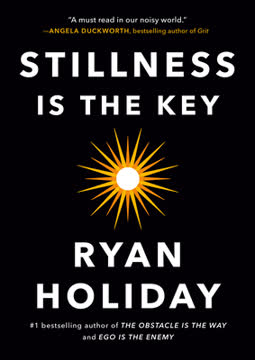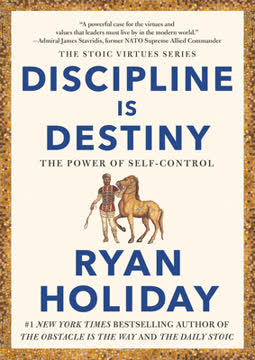मुख्य निष्कर्ष
1. साहस सभी सद्गुणों की नींव है और अर्थपूर्ण जीवन की कुंजी
"साहस प्रतिभा से भी कम मात्रा में मिलता है।"
साहस क्रिया को संभव बनाता है। बिना साहस के, बुद्धिमत्ता, न्याय और संयम जैसे अन्य सद्गुण पूरी तरह से प्रकट या व्यवहार में नहीं आ सकते। यह वह उत्प्रेरक है जो व्यक्ति को चुनौतियों का सामना करने, कठिन निर्णय लेने और बाधाओं के बावजूद अपने लक्ष्यों को पाने की शक्ति देता है।
साहस विभिन्न रूपों में प्रकट होता है:
- शारीरिक साहस: शारीरिक चोट या मृत्यु का सामना करना
- नैतिक साहस: अपने विश्वासों और मूल्यों के लिए खड़ा होना
- बौद्धिक साहस: विरोध के बावजूद सत्य और ज्ञान की खोज करना
- भावनात्मक साहस: अपनी भावनाओं का सामना करना और उन्हें व्यक्त करना
साहस केवल महान वीरतापूर्ण कार्यों तक सीमित नहीं है, बल्कि रोज़मर्रा के उन निर्णयों में भी होता है जो हमें अपनी आरामदायक सीमाओं से बाहर निकलने के लिए प्रेरित करते हैं। इन छोटे-बड़े साहसिक कार्यों के माध्यम से हम अर्थपूर्ण जीवन बनाते हैं और समाज के सुधार में योगदान देते हैं।
2. भय साहस का दुश्मन है, लेकिन तर्क और तैयारी से इसे परास्त किया जा सकता है
"हम भय को तर्क से हराते हैं।"
भय एक स्वाभाविक प्रतिक्रिया है जो संभावित खतरे या अनिश्चितताओं के प्रति होती है, लेकिन यदि इसे अनियंत्रित छोड़ दिया जाए तो यह लकवा मार सकता है। भय का तर्कसंगत विश्लेषण करके और उसे उसके घटकों में विभाजित करके हम उसकी शक्ति को कम कर सकते हैं।
भय पर विजय पाने के उपाय:
- भय के विशिष्ट स्रोत की पहचान करें
- सबसे खराब स्थिति और उसकी संभावना का विश्लेषण करें
- संभावित चुनौतियों से निपटने के लिए तैयारी और कौशल विकसित करें
- धीरे-धीरे भय उत्पन्न करने वाली परिस्थितियों का सामना करें
- कार्रवाई के संभावित सकारात्मक परिणामों पर ध्यान केंद्रित करें
तैयारी आत्मविश्वास बढ़ाने और भय को कम करने की कुंजी है। ज्ञान प्राप्त करके, कौशल का अभ्यास करके और मानसिक रूप से परिदृश्यों का पूर्वाभ्यास करके हम चुनौतियों का सामना अधिक संयम और प्रभावशीलता से कर सकते हैं।
3. साहस संक्रामक होता है और दूसरों को कार्रवाई के लिए प्रेरित करता है
"साहस संक्रामक है।"
व्यक्तिगत साहस के कार्य दूसरों में भी बहादुरी जगाने का प्रभाव पैदा करते हैं। जब लोग साहस को क्रियान्वित होते देखते हैं, तो यह उनकी अपनी सीमाओं को चुनौती देता है और उन्हें जोखिम लेने के लिए प्रोत्साहित करता है।
साहस फैलाने के तरीके:
- उदाहरण प्रस्तुत करके नेतृत्व करना
- साहस और दृढ़ता की कहानियाँ साझा करना
- जोखिम लेने को प्रोत्साहित करने वाले सहायक वातावरण बनाना
- छोटे-बड़े साहसिक कार्यों को पहचानना और मनाना
संकट या अनिश्चितता के समय, साहसी व्यक्ति अक्सर नेता के रूप में उभरते हैं, जो दूसरों को किसी उद्देश्य या दृष्टि के लिए एकजुट करते हैं। उनकी बहादुरी भय और उदासीनता को सामूहिक कार्रवाई और सकारात्मक परिवर्तन में बदल सकती है।
4. सच्चा साहस अक्सर अकेले खड़े होने और भीड़ के खिलाफ जाने की मांग करता है
"डर के लिए कोई जगह नहीं है। जो हम करना चाहते हैं, उसके लिए तो बिल्कुल नहीं।"
अपने विश्वासों के लिए खड़ा होना, खासकर जब वे अलोकप्रिय हों या स्थापित व्यवस्था को चुनौती दें, साहस का उच्चतम रूप है। इसके लिए आत्म-विश्वास और अपने सिद्धांतों में दृढ़ता आवश्यक है।
ऐसे साहसी व्यक्तियों के उदाहरण जो अकेले खड़े हुए:
- गैलीलियो ने चर्च के खिलाफ सूर्यकेंद्रवाद का बचाव किया
- रोजा पार्क्स ने बस की सीट नहीं छोड़ी
- भ्रष्टाचार उजागर करने वाले व्हिसलब्लोअर
भीड़ के खिलाफ जाना अक्सर व्यक्तिगत और पेशेवर जोखिमों के साथ आता है। फिर भी, ऐसे साहसिक कार्यों के माध्यम से ही सामाजिक प्रगति और सकारात्मक परिवर्तन संभव होते हैं।
5. वीरता दूसरों और उच्च उद्देश्य के लिए स्वयं को जोखिम में डालने का नाम है
"इससे बड़ा प्रेम कोई नहीं करता कि कोई अपने मित्रों के लिए अपनी जान दे।"
वीरता व्यक्तिगत लाभ से ऊपर उठकर दूसरों की भलाई या किसी महान उद्देश्य की उन्नति पर केंद्रित होती है। इसमें अक्सर आत्म-बलिदान और खतरे या विपत्ति का सामना करने की इच्छा शामिल होती है।
वीरता के कार्यों की विशेषताएँ:
- निःस्वार्थता और परोपकार
- महत्वपूर्ण जोखिम लेने की तत्परता
- उच्च उद्देश्य या आदर्श की सेवा में कार्य करना
- अक्सर सहज और नैतिक विश्वास से प्रेरित
वीर कई रूपों में आते हैं, जैसे आग बुझाने वाले जो जलती इमारतों में दौड़ते हैं या सामाजिक न्याय के लिए लड़ने वाले कार्यकर्ता। जो उन्हें जोड़ता है वह है दूसरों की जरूरतों या उद्देश्य को अपनी स्वार्थपरता से ऊपर रखना।
6. नेताओं को निर्भयता दिखानी चाहिए ताकि वे विश्वास और परिवर्तन को प्रेरित कर सकें
"अगर वे तुम्हें मजबूर कर सकते हैं, तो तुम भूल गए हो कि मरना कैसे है।"
प्रभावी नेतृत्व में केवल दृष्टि और रणनीति ही नहीं, बल्कि दूसरों में विश्वास जगाने की क्षमता भी शामिल होती है। जो नेता विपरीत परिस्थितियों में साहस और संयम दिखाते हैं, वे अपनी टीमों को चुनौतियों को पार करने और असाधारण परिणाम प्राप्त करने के लिए प्रेरित कर सकते हैं।
नेता निर्भयता कैसे दिखा सकते हैं:
- कठिन निर्णय लेना और उनके परिणाम स्वीकार करना
- आलोचना और विरोध का सम्मानपूर्वक सामना करना
- नवाचार और प्रगति के लिए सोच-समझकर जोखिम लेना
- गलतियों को स्वीकार करना और उनसे सीखना
- सिद्धांतों पर दृढ़ रहना, भले ही वे अलोकप्रिय हों
साहस का उदाहरण देकर, नेता अपने संगठनों या समुदायों में बहादुरी और लचीलापन की संस्कृति बनाते हैं। यह निर्भयता परिवर्तन और नवाचार के लिए उत्प्रेरक बन सकती है।
7. आशा और धैर्य साहस और वीरता के अनिवार्य अंग हैं
"काम, प्रेम, साहस और आशा। मुझे अच्छा बनाओ और मुझे संभालने में मदद करो!"
विपरीत परिस्थितियों में आशा बनाए रखना स्वयं एक साहसिक कार्य है। इसके लिए सकारात्मक परिवर्तन की संभावना में विश्वास होना आवश्यक है, भले ही हालात कठिन हों। धैर्य, यानी बाधाओं और असफलताओं के बावजूद जारी रहने की क्षमता, आशा को वास्तविकता में बदलता है।
आशा और धैर्य के तत्व:
- भविष्य के प्रति आशावाद
- असफलता के सामने लचीलापन
- धैर्य और दीर्घकालिक सोच
- अनुकूलनशीलता और सीखने की इच्छा
- किसी दृष्टि या लक्ष्य के प्रति प्रतिबद्धता
आशा और धैर्य वह ऊर्जा देते हैं जो लंबी अवधि की चुनौतियों से निपटने और महत्वाकांक्षी लक्ष्यों को पाने के लिए आवश्यक साहस को पोषित करते हैं। ये व्यक्ति और समाज दोनों के लिए कठिनाइयों को पार करने और सार्थक परिवर्तन लाने के लिए अनिवार्य हैं।
8. अन्याय के सामने मौन रहना कायरता का रूप है
"एक समय आता है जब मौन विश्वासघात बन जाता है।"
अन्याय के खिलाफ आवाज उठाना नैतिक कर्तव्य है, भले ही इसके लिए व्यक्तिगत कीमत चुकानी पड़े। गलत कार्यों के सामने चुप रहना सहमति के समान है और हानिकारक प्रथाओं या प्रणालियों को जारी रहने देता है।
लोग मौन क्यों रहते हैं:
- प्रतिशोध या सामाजिक बहिष्कार का डर
- विश्वास कि आवाज उठाने से कोई फर्क नहीं पड़ेगा
- विवाद से बचने या आराम बनाए रखने की इच्छा
- मुद्दे की समझ या जागरूकता का अभाव
मौन तोड़ने के लिए नैतिक साहस और संभावित परिणामों का सामना करने की तत्परता चाहिए। फिर भी, सत्ता को सच बोलने के इन कार्यों से ही अक्सर सकारात्मक सामाजिक परिवर्तन की शुरुआत होती है।
9. साहस भय का अभाव नहीं, बल्कि उसके बावजूद कार्रवाई की इच्छा है
"महत्वपूर्ण बात है कि डरना नहीं।"
सच्चा साहस भयहीन होना नहीं, बल्कि भय को स्वीकार कर फिर भी आगे बढ़ना है। इसमें किसी कार्य के जोखिमों और संभावित परिणामों को समझना शामिल है, लेकिन सिद्धांत या उच्च उद्देश्य के आधार पर कार्रवाई करना चुनना होता है।
साहसिक कार्रवाई के घटक:
- आत्म-जागरूकता और भावनात्मक बुद्धिमत्ता
- स्पष्ट मूल्य और प्राथमिकताएँ
- जोखिमों का यथार्थवादी आकलन
- लक्ष्य या सिद्धांत के प्रति प्रतिबद्धता
- असुविधा या अनिश्चितता का सामना करने की तत्परता
साहस को एक जन्मजात गुण के बजाय एक विकल्प के रूप में देखने से हम अपने दैनिक जीवन में बहादुरी विकसित करने में सक्षम होते हैं। यह अपनी आरामदायक सीमाओं से छोटे-छोटे कदम बाहर निकलने और धीरे-धीरे बड़े चुनौतियों का सामना करने के लिए आत्मविश्वास बनाने का नाम है।
अंतिम अपडेट:
FAQ
What's "Courage Is Calling: Fortune Favors the Brave" by Ryan Holiday about?
- Exploration of Courage: The book delves into the concept of courage, examining its role in overcoming fear and achieving greatness.
- Historical and Modern Examples: It uses stories from history and contemporary times to illustrate how courage has shaped individuals and societies.
- Philosophical Insights: The book draws on Stoic philosophy, particularly the teachings of figures like Marcus Aurelius and Seneca, to provide a framework for understanding and cultivating courage.
- Call to Action: Holiday encourages readers to embrace courage in their own lives, suggesting that it is a choice that can lead to personal and societal transformation.
Why should I read "Courage Is Calling: Fortune Favors the Brave"?
- Practical Guidance: The book offers actionable advice on how to cultivate courage in everyday life, making it relevant for personal growth.
- Inspiration from Stories: Through compelling narratives, it provides inspiration by showcasing how ordinary people have achieved extraordinary feats through courage.
- Philosophical Depth: It provides a deep dive into Stoic philosophy, offering timeless wisdom that can be applied to modern challenges.
- Empowerment: Reading this book can empower you to face fears and take bold actions, potentially leading to significant personal and professional breakthroughs.
What are the key takeaways of "Courage Is Calling: Fortune Favors the Brave"?
- Courage is a Choice: Courage is not an innate trait but a decision that can be made in the face of fear.
- Fear as a Guide: Fear often points to the actions we need to take, serving as a guide rather than a deterrent.
- Courage is Contagious: Acts of bravery can inspire others, creating a ripple effect that can lead to widespread change.
- Integration of Virtues: Courage is interconnected with other virtues like justice, wisdom, and temperance, forming a foundation for a virtuous life.
How does Ryan Holiday define courage in "Courage Is Calling"?
- Management of Fear: Courage is described as the management and triumph over fear, allowing individuals to take action despite uncertainties.
- Moral and Physical Courage: The book distinguishes between moral courage (standing up for what is right) and physical courage (facing physical danger).
- Agency and Action: Courage involves asserting agency over one's life and circumstances, making deliberate choices to act.
- Selflessness: True courage often involves risking oneself for the benefit of others or a greater cause.
What are the Four Virtues discussed in "Courage Is Calling"?
- Courage: The primary focus of the book, seen as the virtue that enables all other virtues by overcoming fear.
- Temperance: Defined as self-control and moderation, essential for maintaining balance and composure.
- Justice: Involves fairness, service, and kindness, guiding individuals to act ethically and with integrity.
- Wisdom: Encompasses knowledge, truth, and self-reflection, providing the insight needed to make informed and virtuous decisions.
What is the significance of the story of Hercules in "Courage Is Calling"?
- Choice Between Paths: The story of Hercules at the crossroads symbolizes the choice between the easy path of vice and the challenging path of virtue.
- Universal Dilemma: It represents the universal human dilemma of choosing between comfort and excellence.
- Virtue as Excellence: Hercules's choice of virtue is portrayed as a pursuit of excellence in moral, physical, and mental aspects.
- Inspiration for Action: The story serves as an inspiration for readers to choose courage and virtue in their own lives.
How does "Courage Is Calling" relate to Stoic philosophy?
- Stoic Foundations: The book heavily draws on Stoic philosophy, particularly the teachings of Marcus Aurelius and Seneca, to explore the concept of courage.
- Virtue Ethics: It aligns with the Stoic belief that virtue is the highest good and that courage is essential for living a virtuous life.
- Practical Wisdom: Stoicism provides practical wisdom for managing fear and making courageous decisions.
- Focus on Agency: The Stoic emphasis on personal agency and responsibility is a central theme in the book.
What are some of the best quotes from "Courage Is Calling" and what do they mean?
- "Courage is not simply one of the virtues, but the form of every virtue at the testing point." This quote emphasizes that courage is essential for practicing all other virtues, especially when they are challenged.
- "Fear is a liability. Fear holds you back." It highlights the idea that fear is an obstacle to be overcome, not a reason to avoid action.
- "One man with courage makes a majority." This quote suggests that a single courageous individual can inspire and lead others, creating significant change.
- "Fortune favors the bold." It underscores the belief that taking risks and acting courageously often leads to success and favorable outcomes.
How does Ryan Holiday suggest overcoming fear in "Courage Is Calling"?
- Logical Analysis: The book advises using logic to break down and understand fears, reducing their power over us.
- Small Steps: Encourages starting with small, manageable actions to build momentum and confidence.
- Preparation and Training: Emphasizes the importance of preparation and practice in building competence and reducing fear.
- Embracing Discomfort: Suggests getting comfortable with discomfort as a way to build resilience and courage.
What role does selflessness play in "Courage Is Calling"?
- Heroic Courage: The book defines true heroism as risking oneself for the benefit of others, going beyond personal gain.
- Love as Motivation: Selflessness is often driven by love for others, a cause, or a greater good.
- Sacrifice: Highlights that selflessness often involves sacrifice, whether of time, resources, or personal safety.
- Inspiration for Others: Acts of selflessness can inspire others to act courageously and selflessly as well.
How does "Courage Is Calling" address the concept of agency?
- Belief in Agency: The book stresses the importance of believing in one's ability to influence and change circumstances.
- Rejecting Fatalism: Encourages rejecting the idea that we are at the mercy of fate or external forces.
- Taking Action: Agency is about taking deliberate actions to assert control over one's life and environment.
- Empowerment: By embracing agency, individuals can overcome fear and take courageous steps toward their goals.
What is the ultimate message of "Courage Is Calling: Fortune Favors the Brave"?
- Courage as a Choice: The ultimate message is that courage is a choice available to everyone, and it is essential for personal and societal progress.
- Call to Action: The book serves as a call to action for readers to embrace courage in their own lives and make a positive impact.
- Interconnected Virtues: It emphasizes the interconnectedness of courage with other virtues, suggesting that a virtuous life requires courage.
- Legacy of Courage: Encourages readers to draw inspiration from historical and contemporary examples of courage, continuing the legacy of bravery.
समीक्षाएं
Courage Is Calling पुस्तक को मिली-जुली प्रतिक्रियाएँ मिली हैं। कई पाठक इसकी प्रेरणादायक कहानियों और सद्गुणों पर जोर देने की प्रशंसा करते हैं, उन्हें यह पुस्तक उत्साहवर्धक और सोचने पर मजबूर करने वाली लगती है। वहीं कुछ आलोचक इसे गहराई से रहित बताते हैं, यह आरोप लगाते हैं कि पुस्तक युद्ध के उदाहरणों पर अत्यधिक निर्भर है और बार-बार दोहराव हो जाता है। कुछ लोग Holiday के व्यक्तिगत अनुभवों और लेखन शैली की सराहना करते हैं, जबकि अन्य इसे उपदेशात्मक और सतही मानते हैं। पुस्तक की संरचना और ऐतिहासिक व्यक्तित्वों पर केंद्रित होने के कारण भी प्रशंसा और आलोचना दोनों हुई है। कुल मिलाकर, पाठकों की राय काफी विविध है; कुछ इसे साहस पर एक महत्वपूर्ण संसाधन मानते हैं, तो कुछ इसे सामान्य और अधूरा कार्य समझकर खारिज कर देते हैं।
Similar Books






